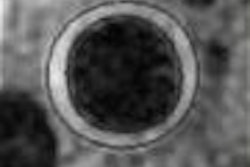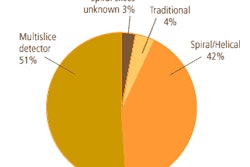Computed radiography systems are ideal for large imaging centres and intensive care units. But smaller facilities should work out the economics carefully before falling for the hype and investing, warns Dr Rajesh Gothi, senior consultant at the Diwan Chand Satya Pal Aggarwal Imaging Research Centre in New Delhi. In this exclusive article for AuntMinnieIndia.com, he gives a primer on CR systems for the novice buyer.
CR systems consist of a cassette containing an image plate on which the image is captured. The plate is passed through an imager that reads the image. The plate is then cleared for further use after the image is read. The image, after appropriate adjustments, is forwarded to the camera for printing a hard copy.
Vendors typically supply two plates in different sizes. The most popular sizes are 8 x 10, 10 x 12, and 11 x 14 inches. CT and MR users also buy 14 x 17 inches cassettes. Pressure from competition, rather than other advantages, is currently forcing many private radiology practices to consider buying a CR system.
The starting price for most low-end CR systems is Rs 15-17 lakh. Midlevel systems are priced between Rs 25-40 lakh. The cost includes the imager, camera, and cassettes. Most manufacturers provide a two-year warranty, or a warranty that is based on the number of exposures.
Each cassette with a plate costs Rs 40,000 or more, depending on its size. If the plates or the cassettes holding them are damaged (either by accident or through misuse), they will have to be replaced. A couple of manufacturers offer repairs if there is minor damage to the cassettes. However, the trend is usually to replace, rather than repair, damaged cassettes.
The annual maintenance contract for a CR system represents about 2% of the total system cost. Most vendors suggest opting for a maintenance contract, although it is not mandatory.
Imaging films are also considerably more expensive than screen films. Prices range from Rs 30 for the small films to Rs 70 for the large films. CR cameras are closed systems and work only with films made by the camera manufacturer. Therefore, unlike screen films, CR systems to not allow you to choose a less expensive film from a different vendor.
Pros and pitfalls of a CR system
A CR system is very useful and cost-effective for imaging centres where a large number of x-rays are done on a daily basis. Hospitals and centres with a turnover of 100 exposures or more per day can safely recover their cost within five years -- the primary reason being fewer repeat x-rays. Minor errors in exposure can be covered by the system. However, major errors in exposure and positioning require re-exposure.
Another benefit of CR is that the images can easily be sent to different departments over the computer network. The images can also be stored on a CD or any other storage medium, and there is no need for an imaging film.
Filmless imaging is especially relevant for intensive care units (ICUs) where a lot of images are taken daily. These images have to be dated or, at times, timed and viewed in sequence. In such cases, it is very useful to have the images on the computer so they can be viewed in sequence for easy reading.
ICU images are also usually suboptimal, and the CR system can be used to improve quality. The images can be adjusted to view bones and soft tissues, and also combined with the ultrasound and Doppler images for more meaningful interpretation. The image can be given to a patient on CD, along with the discharge summary.
In other words, there is no need for multiple imaging films, and costs can reduced substantially. In addition, remote monitoring of images from the consulting physician's office makes CR a very useful modality in a critical care setting.
However, for small imaging centres that do less than 50 exposures a day, the system is not very cost-effective. These centres will have to spend Rs 5-7 lakh on the x-ray unit, Rs 20 lakh on the CR system, and do about 20 x-rays for Rs 120-200!
So how long will it take to recover the costs? The economics has to be worked out thoroughly before the investment is made. It is also worth remembering that the good old film-screen system is adequate in most cases, and that reporting and diagnosis do not necessarily improve because a CR system has been installed.
Another important consideration is that CR may not lead to reduced radiation exposure. In their efforts to consistently obtain good film, technicians have a tendency to overexpose. An underexposed image is difficult to correct compared to the overexposed image. This may burden the x-ray tube, and also needlessly increase dose for patients, especially in the paediatric group.
No doubt there is a lot of excitement about CR. But the excitement is bound to settle down, with the costs coming down to more manageable levels. Exposure will also be standardised to ALARA levels. My suggestion would be that large centres with ICUs should opt for CR, while smaller centres shouldn't fall for "the competition has it" sales ploy and invest in it just yet.
By Dr Rajesh Gothi
AuntMinnieIndia.com contributing writer
February 7, 2005
Gothi is a senior consultant at the Diwan Chand Satya Pal Aggarwal Imaging Research Centre in New Delhi.
Copyright © 2005 AuntMinnie.com


















